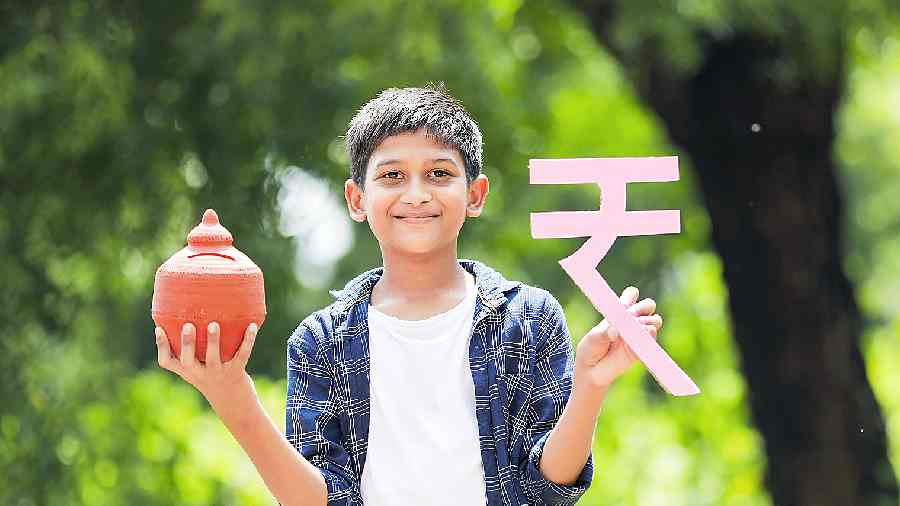Manoj, 25, works at a leading start-up in Gurgaon. It is his first job. He earns Rs 42,000 a month. His significant expenses every month include rent, takeaways, transportation, and entertainment. He has no savings so far.
Recently, he came down to his last thousand bucks as he entered the last week of the month. It made sustenance tricky.
Manoj had to borrow from his parents to make ends meet till his next pay cheque reached his bank. He needs to review his priorities to avoid experiencing acute financial stress again. He needs to save proactively and cut down on non-essential spending.
Let us compare Manoj to Lenny, 26. He is in his second job at a firm in Noida, earning Rs 75,000 per month. Lenny’s finances are sorted. He eats home-cooked meals, rides a scooter to work and spends lightly on entertainment. He lives in a shared accommodation and splits rent with his co-workers.
He now has more than Rs 450,000 saved in his salary account. These are passive savings. He made no attempt to save this sum proactively. The savings accumulated because he lives frugally and spends much less than he earns. Each month, he saves close to Rs 40,000. The money stays in his account, unspent.
Lenny is in a better place to manage his liquidity needs in comparison to Manoj. Lenny keeps the money in his account because he believes he could need it any moment. To him, this is the easiest way to access his funds. Unfortunately, such financial behaviour, too, is problematic.
American rapper Snoop Dogg once said, ‘If you stop at general math, you are only going to make general math money.’
A large, unspent balance at the month end is good, but still a problem. It reveals that Lenny’s money does not get proactively managed. He is earning a much lower rate of return than he ought to on his savings. On the other hand, Manoj’s problem is that he is not saving at all.
A savings account will typically pay you interest at the rate of 3–4 per cent per annum. As a crude example, Rs 1,000 saved for a year at 4 per cent will give you Rs 40 as interest, which is a very low return. Therefore, you should move surplus liquidity into savings and investment instruments that can provide better returns.
Now, here is how Manoj and Lenny have decided to remedy their respective problems.
Manoj has started saving Rs 8,000 at the beginning of every month before he spends a single rupee. While it continued to stretch his finances, he now has the option of dipping into his savings instead of borrowing from his parents or using his credit card.
On the other hand, Lenny has started keeping only Rs 50,000 as surplus funds in his salary account. He has moved the rest of his savings into an FD that gives him 6 per cent interest.
He is, therefore, earning 50 per cent higher than the 4 per cent his savings account provides. He has also decided to divert his future savings towards more attractive investments, like mutual funds and provident fund (PF), where his returns could be much higher than 6 per cent.
Diversify your savings
A large bank is the best place to keep your money. Consider your bank a temporary parking spot for your income. It should hold the cash you need for your immediate wants and needs. These could be cash for your rent, EMIs, groceries, utilities, and so on. The rest of your savings should ideally sit in an FD or an investment account, where it will earn a higher rate of return.
Diversity in savings and investment is necessary. Different kinds of savings provide you with different advantages such as diversified rates of return, more points of access to your money and higher safety of your capital. Let us understand this with an example.
Shravan has one account each in a government, private and a local cooperative bank. He receives his salary in the government bank account. He uses this account to park his cash for immediate needs. This account pays him an interest at the rate of 3 per cent.
He transfers surplus funds into the private bank account. From there, he gets 6 per cent interest on a recurring deposit (RD), which he uses for creating his emergency fund. Shravan also opened an FD of Rs 1 lakh with the cooperative bank, which was giving him an unusually high return of 7 per cent. However, he understood that a high exposure to this bank may not be in his best interest. Lately, there have been news reports of rising NPAs there.
These three accounts helped Shravan ensure that:
- His capital remains safe with two large banks.
- He gets better average returns by splitting his money in multiple accounts as per his risk tolerance.
- He creates multiple points of access to his money, and if there is any problem with one bank, he can approach the other two.
- He keeps his deposits below the deposit insurance limit of Rs 5 lakh in the cooperative bank. If that bank goes under, his money would stay protected.
The writer is CEO of BankBazaar. com. The article has case studies from ‘The Bee, The Beetle & The Money Bug’ by Adhil Shetty and AR Hemant, published by Rupa Publications.











